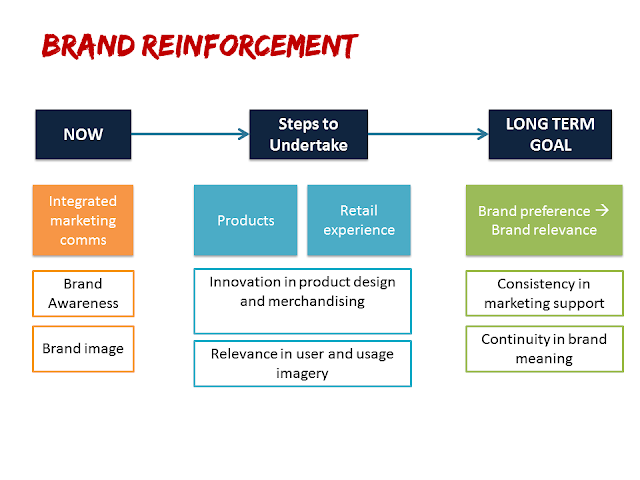Closing Strategic Gap
Product Innovation
After
closing the tactical gap, we came up with several future growth strategies for
Denizen in terms of product innovation, improving retail experience and improve
communication to close the strategic gap.
Product Innovation
Based on our survey results, consumers
perceived Denizen to have limited product offerings and designs. As such,
Denizen should improve and increase its product offerings and designs to
attract its desired target consumers. Riding on the Korean and Japanese trend,
Denizen will engage dedicated design team to update their designs of tees
regularly and seek collaboration with celebrity designers to launch trendy designs to entice the youth to purchase Denizen products.
Improving Retail Experience
Photo Booth
To make the retail experience more
exciting and to help Denizen attract the correct target group (a younger
crowd), we would set up a
photo booth in selected stores.
After
trying on the jeans, consumers can choose to take photos in the store. Thereafter, we would display the photos in a
LCD TV in the store. We would also be posting the photos on Facebook
after obtaining their approval to drive traffic to our Facebook. To goal is to enhance the overall retail experience by evoking more excitement to allow the
customers to stay in the store for a longer period of time. This would
encourage them to make a purchase eventually.
Mobile Application
(1)Body
shape Analysis:
Part
of the retail experience would be the use of this mobile app to help
analyze customers body shape. This would be to help consumers find the right fit
and to bring across Denizen’s focus on Asian cuts.
(2)
Catalogue of latest collection:
This
would be to help create a virtual retail experience to engage the
consumers continuously. This can also serve as a platform to reach out to the consumers
regarding the latest product launches and offerings.
Customer Service
To complement the retail experience,
customer service is one of the important touch points. Training has to be
provided for all retail staff in areas such as offering professional recommendations for
jeans and other apparel. Denizen will seek to achieve the Service Excellence Award by SPRING Singapore in the next 5 years to come.
Improving Communications
To
assist Denizen in improving the products and services, it is important seek feedback from the consumers through continuous engagement. This can be done
through the various online platforms that she has. For instance, with the
launch of Denizen Singapore Facebook page, it would be easier for the local team to
make use of this platform to gather opinions from the Singapore market.




























